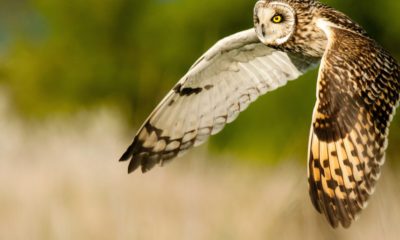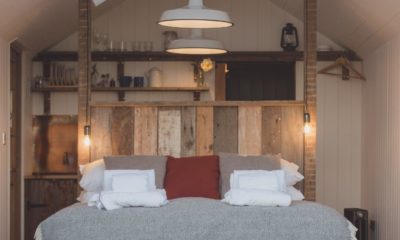September Newsletter
Farming & Land Management
We do hope everyone has enjoyed a lovely summer. As the summer sun wanes the marshes are now bone dry, making it a tough month for many species, and our cows. The departing migrants are vanishing each night. We already miss the cloud of martins which summered around the farm buildings. Across the marsh, Autumn sights are appearing with flocking wildfowl, skeins overhead and passage migrants flitting through. As the marsh is still so dry waders are concentrating on the edge of the Swale saltings in good numbers awaiting the rains which will make the marsh more palatable in the months ahead. It has been a disappointing year for butterflies here, as it is nationally, although we have seen small numbers of Clouded Yellows appear over the last week or so. Dragonflies have had a late spurt with migrant hawkers abundant at the moment.
The summer has been very productive across the marsh despite the loss of 50 acres of hay to a fire in July. Very luckily the wind took the flames away from the buildings and as the hay had been cut loss of wildlife was negligible. Throughout August we have 'topped' (or mown) the bulk of the marshes which has taken five (very bumpy weeks) weeks to do. The result is to rejuvenate the grasses, promoting new growth which is much more attractive to many over-wintering wildfowl and, of course, our herd. Visitors will now have a much better chance of seeing birds and mammals too!
For those who haven't visited recently you will notice a new route up to Kingshill Farm on your next visit. The route by-passes the farm yard to increase safety for pedestrians and creates more ground for owls, kestrels and harriers to hunt over along the entry road. Extra signs and some new toilets, including proper disabled access, will follow over the winter.
The scrapes in front of the hides have been topped up several times this summer and luckily we have not had any blue-green algal blooms despite the hot weather. The island will be cut by our volunteer team on the coming Monday mornings ready for the in-coming waders (call email or just come along if you'd like to join in!). For now dunlin are still flashing about the scrapes as is a female Merlin whom has made an early appearance.
Thoughts from a Regular
Last week of August was a delight, 9 Wheatear 3 Whinchat, 150 or so Linnet, but best of all an Adult Water Rail with 2 juveniles at Coot Corner.
A family of 4 Kestrels frequenting temporary soil pile at bottom Kingshill.
2016 Breeding Wader Results
This year's lapwing had a tough breeding season. Cold, windy and wet conditions throughout April and May combined with a poor June were pitted against the ground nesting pairs and their chicks. Against those odds we managed to retain 323 pairs of lapwing across the marshes, which although fewer than the last couple of years, was a good result. Those 323 pairs managed to fledge 424 chicks. A superb effort, when poor weather and with 22 predators on the prowl or wing day and night. We aim for a productivity of 0.7 of a chick per pair which would ensure numbers stay the same and so this year's result of 1.3 chicks produced per pair is fantastic for a species which is declining nationally. Skylarks, Yellow Wagtails and Redshank all had a good Spring too. Redshank, which were so numerous, were spoiled for choice of nest sites as the grass grew so rapidly this Spring. We owe a huge thank you to our dedicated survey team who did a great job over many hours in their spare time and to our team who work year round to set the best possible conditions for those breeding pairs and their chicks.
Wildlife - September 2016
Birds
| | ||||
| ||||
|
|
|
|
|
|
| Mute Swan | Cygnus olor | Lesser Black-backed Gull | Larus fuscus |
|
| Greylag Goose | Anser anser | Herring Gull | Larus argentatus |
|
| (Greater) Canada Goose | Branta Canadensis | Mediterranean Gull | Ichthyaetus melanocephalus | |
| Shelduck | Tadorna tadorna | Black-headed Gull | Chroicocephalus ridibundus | |
| Gadwall | Anas strepera | Common Tern | Sterna hirundo |
|
| Teal | Anas crecca | Barn Owl | Tyto alba |
|
| Mallard | Anas platyrhynchos | Little Owl | Athene noctua |
|
| Shoveler | Anas clypeata | Jackdaw | Corvus monedula |
|
| Pochard | Aythya farina | Rook | Corvus frugilegus |
|
|
|
| Carrion Crow | Corvus corone |
|
|
|
| Coot | Fulica atra |
|
| Cormorant | Phalacrocorax carbo | Moorhen | Gallinula chloropus |
|
| Water Rail | Rallus aquaticus | Kingfisher | Alcedo atthis |
|
| Great White Egret | Egretta | Yellow Wagtail | Motacilla |
|
| Little Egret | Egretta garzetta | Pied Wagtail | Motacilla alba |
|
| Grey Heron | Ardea cinerea | Bearded Tit | Panurus biarmicus |
|
| Glossy Ibis | Plegadis falcinellus | Wren | Troglodytes troglodytes |
|
| Great crested Grebe | Podiceps cristatus | Skylark | Alauda arvensis |
|
| Little Grebe | Tachybaptus ruficollis | Starling | Sturnus vulgaris |
|
| Marsh Harrier | Circus aeruginosus | Robin | Erithacus rubecula |
|
| Buzzard | Buteo buteo | House Sparrow | Passer domesticus |
|
| Kestrel | Falco tinnunculus | Meadow Pipit | Anthus pratensis |
|
| Peregrine | Falco peregrinus | Goldfinch | Carduelis carduelis |
|
| Sparrowhawk | Accipiter nisus | Linnet | Carduelis cannabina |
|
| Curlew | Numenius arquata | Whinchat | Saxicola rubetra |
|
| Whimbrel | Numenius phaeopus | Greenfinch | Chloris chloris |
|
| Oystercatcher | Haematopus ostralegus | Reed Bunting | Emberiza schoeniclus |
|
| Avocet | Recurvirostra avosetta | Corn bunting | Emberiza calandra |
|
| Ringed Plover | Charadrius hiaticula | Wheatear | Oenanthe |
|
| Little Ring Plover | Charadrius dubius | Cetti’s Warbler | Cettia cetti |
|
| Grey Plover | Pluvialis squatarola | Reed Warbler | Acrocephalus scirpaceus |
|
| Lapwing | Vanellus vanellus | Sedge Warbler | Acrocephalus schoenobaenus | |
| Bar tailed Godwit | Limosa lapponica | Blackcap | Sylvia atricapilla |
|
| Black-tailed Godwit | Limosa limosa | House Martin | Delichon urbicum |
|
| Common Sandpiper | Actitis hypoleucos | Sand Martin | Riparia riparia |
|
| Greenshank | Tringa nebularia | Swallow | Hirundo rustica |
|
| Wood sandpiper | Tringa glareola | Swift | Apus apus |
|
| Redshank | Tringa totanus | Green Woodpecker | Picus viridis |
|
| Spotted Redshank | Tringa erythropus | Great-Spotted Woodpecker | Dendrocopos major |
|
| Turnstone | Arenaria interpres |
|
|
|
| Ruff | Philomachus pugnax |
|
|
|
| Snipe | Gallinago gallinago |
|
|
|
| Dunlin | Calidris alpina |
|
|
|
| Curlew Sandpiper | Calidris ferruginea | Regular list are posted on the car park notice board |
| |
Wetland Bird Survey - Aug 16
| Wetland Birds Survey - Elmley Sector (not incl. Spitend) - Aug 16 | ||
| A snap shot of wetland birds at high tide on 22.8.16 | ||
| Mute Swan | 33 | includes cygnets |
| Greylag Goose | 1 |
|
| Egyptian Goose | 1 |
|
| Shelduck | 11 | includes juveniles |
| Mallard | 442 |
|
| Shoveler | 10 |
|
| Tufted Duck | 3 |
|
| Pochard | 16 |
|
| Teal | 128 |
|
| Cormorant | 6 |
|
| Little Grebe | 10 |
|
| Great Crested Grebe | 1 |
|
| Little Egret | 16 |
|
| Grey Heron | 12 |
|
| Marsh Harrier | 8 |
|
| Common Buzzard | 5 |
|
| Kestrel | 16 |
|
| Moorhen | 4 |
|
| Coot | 179 |
|
| Avocet | 2 |
|
| Oystercatcher | 62 |
|
| Lapwing | 422 |
|
| Curlew | 32 |
|
| Whimbrel | 15 |
|
| Black-tailed Godwit | 320 | on Swale salt marsh |
| Dunlin | 6 |
|
| Green Sandpiper | 3 |
|
| Common Sandpiper | 1 |
|
| Redshank | 19 |
|
| Grey Plover | 85 |
|
Tide Times - September 2016
| 1st 13:27 |
| 17 13:37 (Full moon) |
| 2nd 14:04 |
| 18 14:16 |
| 3rd 14:39 |
| 19 14:47 |
| 4 15:11 |
| 20 13:38 |
| 5 15:42 |
| 21 16:22 |
| 6 16:14 |
| 22 17:11 |
| 7 16:47 |
| 23 18:07 |
| 8 17:22 |
| 24 19:19 |
| 9 18:06 |
| 25 08:00 |
| 10 19:04 |
| 26 09:22 |
| 11 07:40 |
| 27 10:38 |
| 12 09:05 |
| 28 11:37 |
| 13 10:23 |
| 29 12:25 |
| 14 11:24 |
| 30 13:06 |
| 15 12:14 |
|
|
| 16 12:57 |
|
|
|
|
|
|





